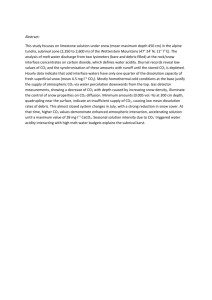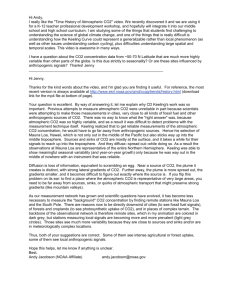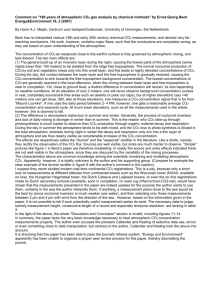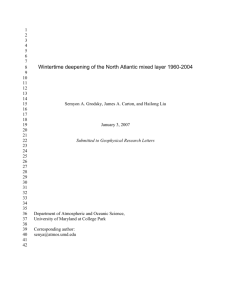Summarry_update_omar.+
advertisement
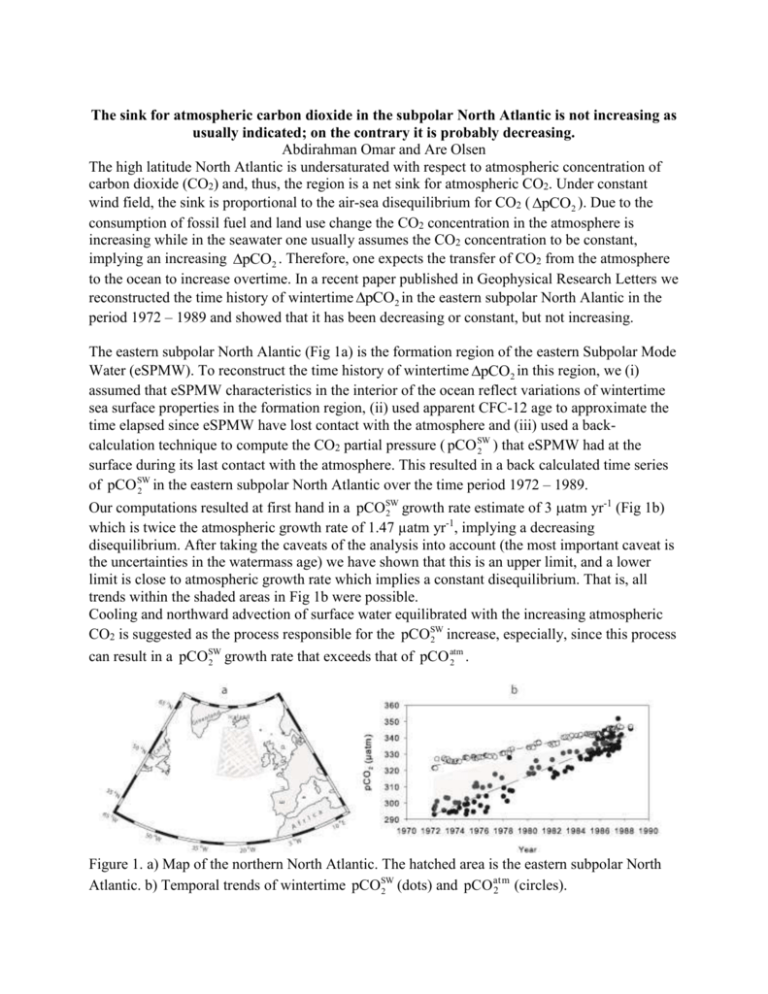
The sink for atmospheric carbon dioxide in the subpolar North Atlantic is not increasing as usually indicated; on the contrary it is probably decreasing. Abdirahman Omar and Are Olsen The high latitude North Atlantic is undersaturated with respect to atmospheric concentration of carbon dioxide (CO2) and, thus, the region is a net sink for atmospheric CO2. Under constant wind field, the sink is proportional to the air-sea disequilibrium for CO2 ( pCO2 ). Due to the consumption of fossil fuel and land use change the CO2 concentration in the atmosphere is increasing while in the seawater one usually assumes the CO2 concentration to be constant, implying an increasing pCO2 . Therefore, one expects the transfer of CO2 from the atmosphere to the ocean to increase overtime. In a recent paper published in Geophysical Research Letters we reconstructed the time history of wintertime pCO2 in the eastern subpolar North Alantic in the period 1972 – 1989 and showed that it has been decreasing or constant, but not increasing. The eastern subpolar North Alantic (Fig 1a) is the formation region of the eastern Subpolar Mode Water (eSPMW). To reconstruct the time history of wintertime pCO2 in this region, we (i) assumed that eSPMW characteristics in the interior of the ocean reflect variations of wintertime sea surface properties in the formation region, (ii) used apparent CFC-12 age to approximate the time elapsed since eSPMW have lost contact with the atmosphere and (iii) used a backcalculation technique to compute the CO2 partial pressure ( pCO SW 2 ) that eSPMW had at the surface during its last contact with the atmosphere. This resulted in a back calculated time series of pCO SW 2 in the eastern subpolar North Atlantic over the time period 1972 – 1989. -1 Our computations resulted at first hand in a pCOSW 2 growth rate estimate of 3 atm yr (Fig 1b) -1 which is twice the atmospheric growth rate of 1.47 µatm yr , implying a decreasing disequilibrium. After taking the caveats of the analysis into account (the most important caveat is the uncertainties in the watermass age) we have shown that this is an upper limit, and a lower limit is close to atmospheric growth rate which implies a constant disequilibrium. That is, all trends within the shaded areas in Fig 1b were possible. Cooling and northward advection of surface water equilibrated with the increasing atmospheric CO2 is suggested as the process responsible for the pCOSW 2 increase, especially, since this process SW can result in a pCO 2 growth rate that exceeds that of pCO atm 2 . Figure 1. a) Map of the northern North Atlantic. The hatched area is the eastern subpolar North atm Atlantic. b) Temporal trends of wintertime pCOSW (circles). 2 (dots) and pCO 2 References: Omar, A. and Are Olsen, (2006). Reconstructing the time history of the air-sea CO2 disequilibrium and its rate of change in the eastern subpolar North Atlantic, 1972–1989, Geophys. Res. Lett., 33, L04602, doi:10.1029/2005GL025425.





